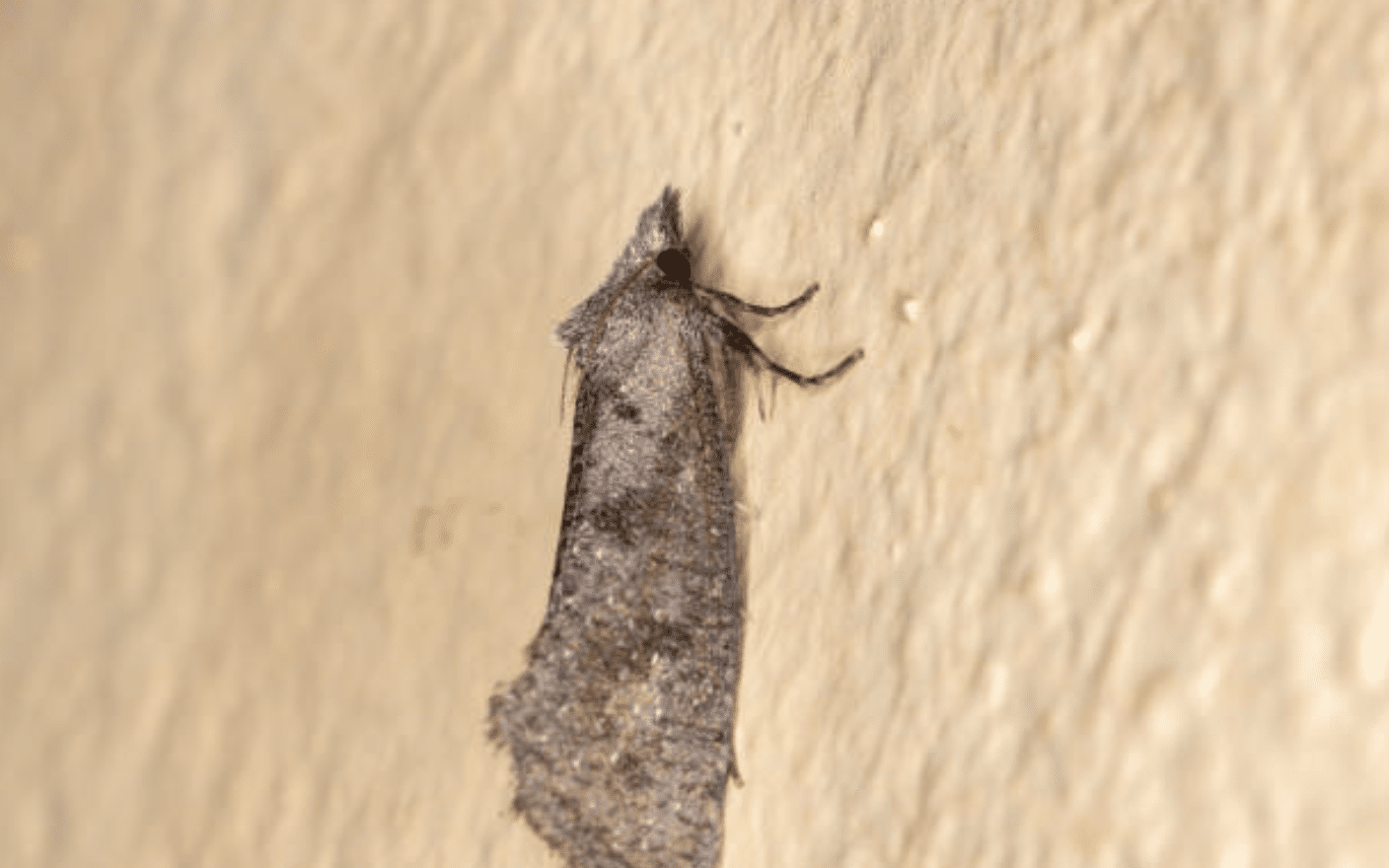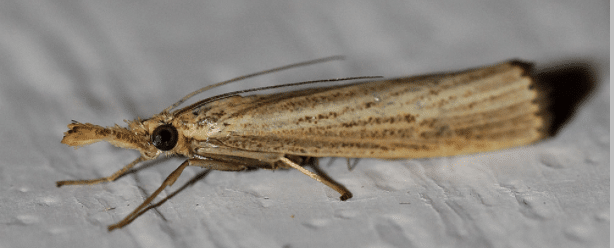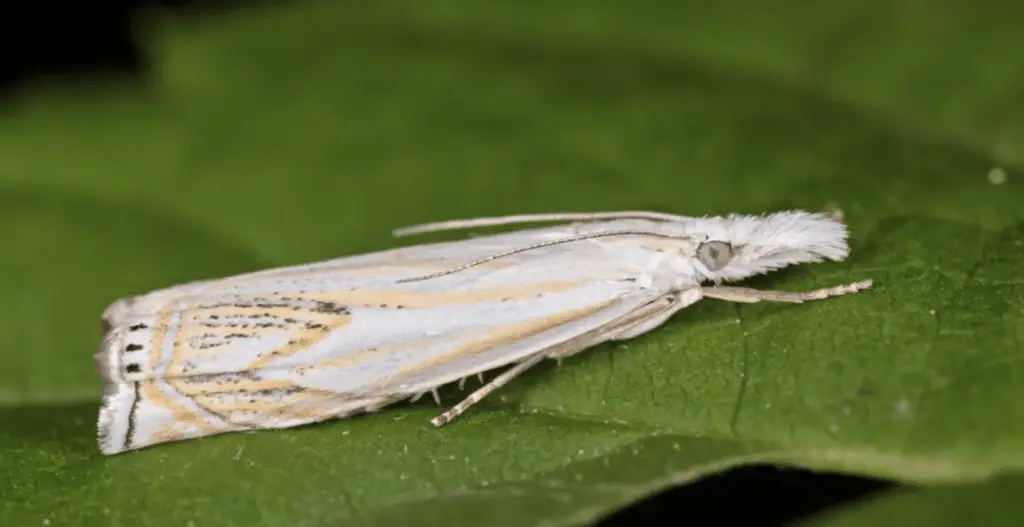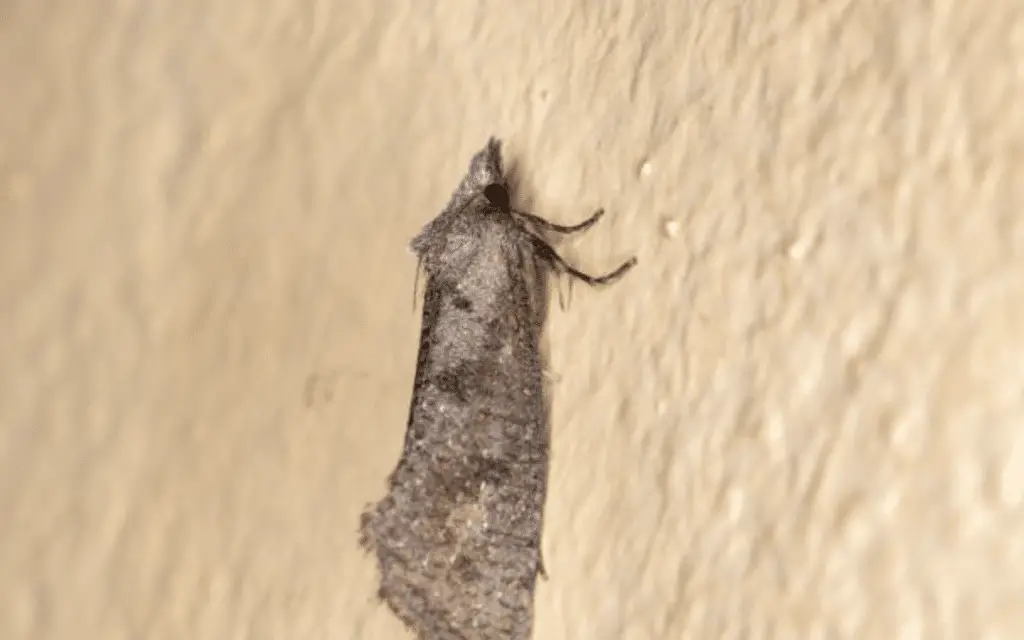Sometimes called ‘lawn moths’ or simply ‘webworms,’ the sod webworm is a destructive lawn pest that causes significant damage or brown patches in the lawn. If you’re willing to combine prevention steps with treatment products, you can get rid of sod webworms within a few weeks or less.
What are Sod Webworms?
Sod webworms are a type of moth larvae that consumes grass and leafy lawn plants.
There are several species of sod webworm to watch out for:
- Parapediasia teterrella
- Pediasia trisecta
- Fissicrambus mutabilis
- Crambus praefectellus
- Pediasia bonifatellus
- Herpetogramma phaeopteralis
Sod webworms are even more dangerous due to their ability to foster multiple generations in the same year. After crawling into the top level of thatch, sod webworm larvae overwinter until April or May. Webworm larvae pupate into the first generation by June, and lay eggs for a second generation due in July or August. A final third generation may emerge between August and September, although dropping temperatures and cooler nights will eventually force them to overwinter again.
In some cases, all two to three generations of sod webworm can overlap with each other, and destroy vast portions of healthy turf.
How to Identify Sod Webworms
Sod webworms appear harmless at first glance, especially while in larvae stages. However, these pests are some of the most destructive animals in the modern lawn. Below are a few tips that help with species identification:
- Buff colored (tan) caterpillars crawling around your soil, thatch, or other turf
- 1/2 to 3/4 inch long larvae inside grass, bushes, or thick vegetation
- Seeing adult sod webworms flying in a zig-zag pattern during early evening or late afternoon
Turf damage caused by sod webworms is sometimes described as ‘gray’ or ‘skeletal’ in appearance. These patches are a clear initial sign of infestation.
Identifying Webworm Lawn Damage
Webworms are pests that deal damage in accordance with infestation numbers. Moderate infestations could lead to small patches of brown grass, while heavy infestations result in more long-lasting lawn damage. The first signs of a sod webworm infestation include:
- Silk lined tunnels in sunny locations around the lawn
- Yellow or brown grass in small patches
- Catching sight of adult moths flitting around the property
If you aren’t 100% sure of a webworm infestation, consider performing a thorough drench test of the property.
When to Treat for Sod Webworms
Sod webworm populations are considered too high at 15 larvae per square yard. This can be measured by a pest professional, or with an at-home drench test.
Here are the steps involved with performing a DIY sod webworm drench test:
- Combine 1/4 a cup of household laundry detergent with 2 gallons of tap water.
- Isolate two 1 square yard sections of grass where you suspect a sod webworm infestation is taking place. Each section should receive at least 1 gallon of liquid over the entire surface.
- Next, wait 5 to10 minutes for the caterpillars to surface. Thick detergents force sod worms to seek fresh air, bringing them out of their burrows.
- Collect and count the number of webworms found on each section of grass. If the number is less than 15, you are within normal populations. If the number is 15 or greater, you may need to start considering treatment options. You may still choose to treat the webworms around your property even with normal populations present, especially if webworm lawn damage is visually evident in patches or sections.
If you do not find any signs of a serious webworm infestation, consider enacting prevention steps just to be safe. Practicing general prevention is an excellent way to ensure protection all season long.
How to Prevent Sod Webworm Larvae
Both chemical insecticides and cultural practices should be used together when controlling sod webworms. Start by removing any attractant factors in the garden:
- Rake as much accumulated thatch as possible, focusing on grass that has more than 3/4 an inch of buildup.
- Attract predatory creatures such as birds to keep larvae numbers to a minimum. In addition, predatory nematodes can be purchased through various online sources, and added to the soil during the summer and fall breeding seasons.
- Spray soapy water on the surface of lawn turf during the sod webworm’s most active hours. Try treating affected parts of the lawn at dusk (just before night).
Serious sod webworm infestations may require heavier product use in order to treat. If this is the case, consider using the following chemicals:
- Carbaryl
- Acephate
- Spinosad
- Synthetic pyrethroids (active ingredient in chrysanthemum flowers)
Boost the effectiveness of your treatments by adding spray to the surface of grass and garden plants after the sun has set (decrease evaporation).
Each of these four options should be applied to your lawn according to specific weight and volume measurements. Be careful not to oversaturate your lawn; extreme treatments could create further problems such as grass burning.
Sod Webworm FAQs
How do you kill sod webworms naturally?
The best way to protect your home from sod webworms is with stanch prevention steps. Pick up worms as you see them, dropping them into a container of soapy water. Attract beneficial nematodes or birds to feed on heavy populations. As a last resort, reach out to a professional pest control agent for seasonal control. This may help to eliminate growing infestations without any threats of overwintering in your garden.
When are sod webworms most active in the garden?
Sod webworms prefer to feed at dusk when harsh sunlight is at its weakest. Data tells us that the best time to get rid of sod webworms is during the late evening or night hours, which range from 7 to 9 PM on average.
Will grass grow back after sod webworm damage?
The vast majority of lawns that are attacked by webworms will regrow once pest pressures are removed. Sod webworms prefer grasses that include bluegrass, bentgrass, zoysiagrass, and buffalograss. They may choose to heavily feed on these varieties for months at a time, crippling regrowth rates. If you are committed to properly watering and fertilizing your recovering lawn, you will likely see a resurgence of health within a few weeks.




